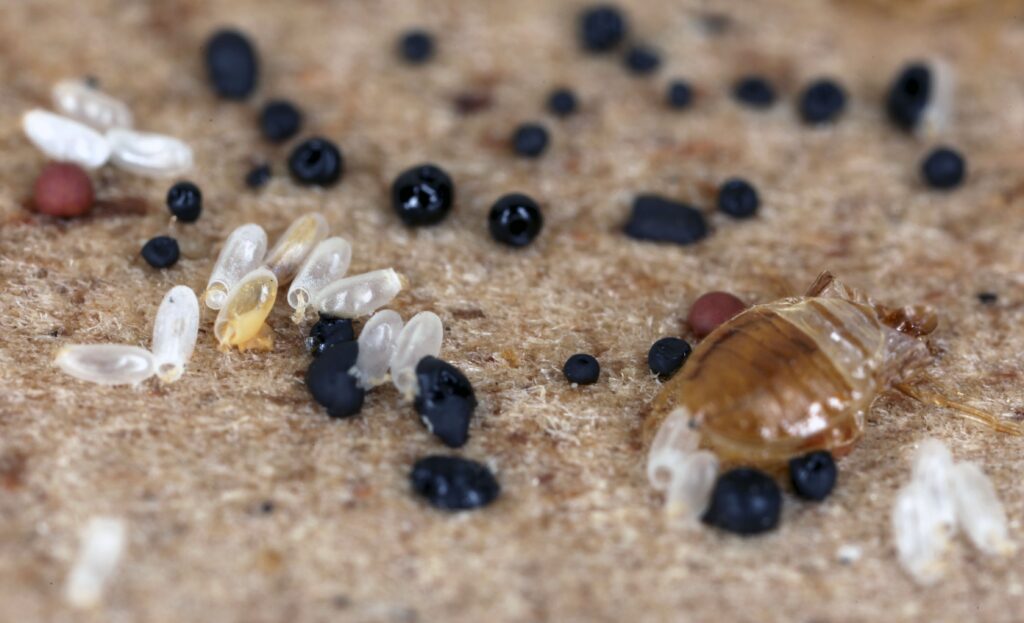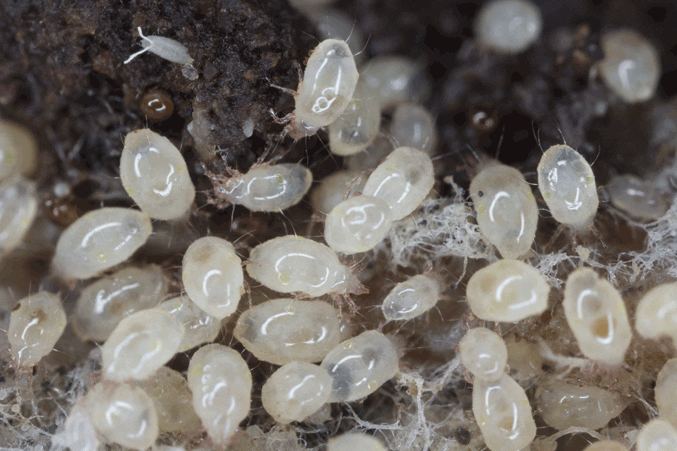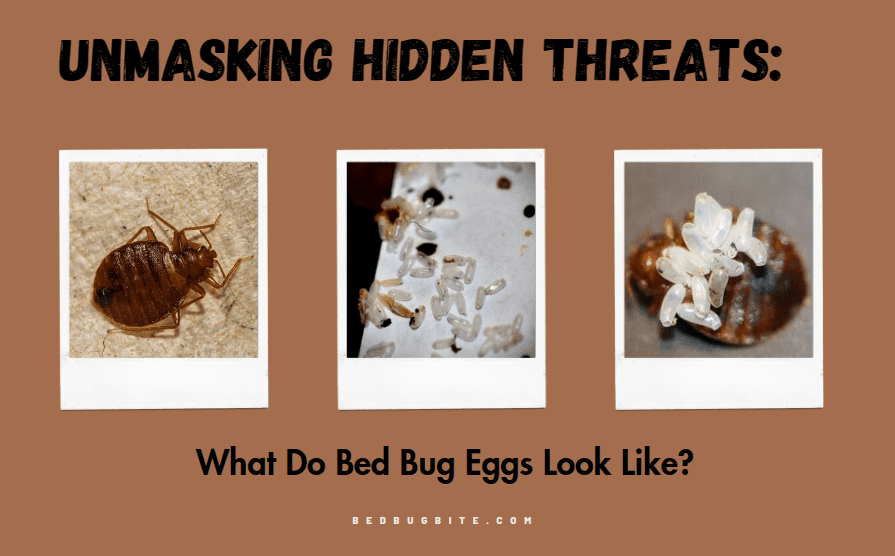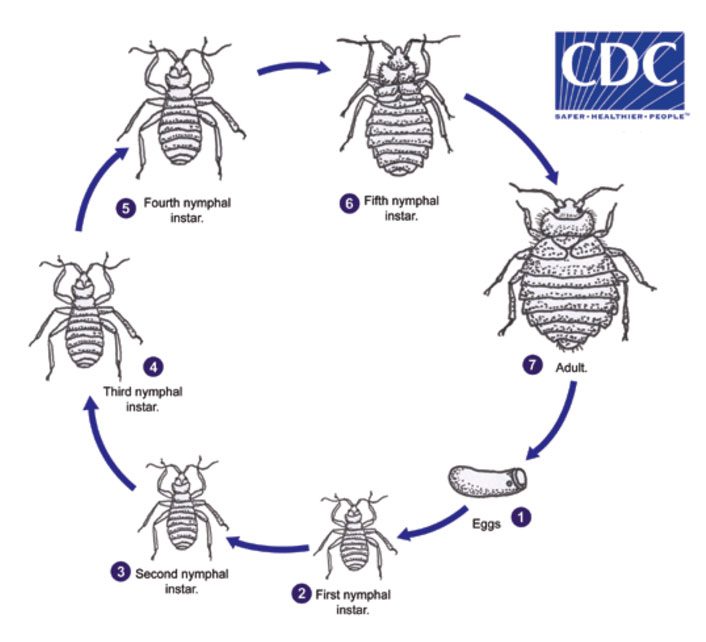As the dawn breaks and you start your day, the last thing you’d want to discover are unwelcome visitors in your haven of rest – your bed. Yes, we’re talking about bed bugs! Even more critical is recognizing not just the bugs themselves, but their minuscule, almost invisible eggs. Understanding what bed bug eggs look like is a vital step in preventing a full-blown infestation in your home, a scenario that nobody wants to deal with.
These tiny invaders can be elusive, and their eggs even more so. Many of us, quite understandably, may not know what we’re looking for. After all, bed bug eggs are rarely a topic of everyday conversation. So, it’s crucial to equip ourselves with this knowledge to stay one step ahead.
In this comprehensive guide, we’ll illuminate the obscured world of bed bugs, starting from the very first stage of their life cycle – the eggs. We’ll walk you through a detailed description of what bed bug eggs look like, how to spot them, and importantly, what steps to take if you do find them. By the end of this journey, you’ll be an expert in identifying and dealing with bed bug eggs, ensuring your home stays safe, and your sleep stays undisturbed. Let’s dive in!
Understanding Bed Bugs: A Brief Overview
Bed bugs, those tiny, parasitic insects scientifically known as Cimex lectularius, have been an uninvited guest in human dwellings for thousands of years. Feeding exclusively on blood, their favorite hideout is (you guessed it right) our beds, close to their unsuspecting hosts.
However, the real key to their survival lies not just in their sneaky nature, but their reproductive abilities. To truly tackle a bed bug infestation, we must understand their life cycle, which starts at the egg stage. After a female bed bug feeds, she can lay hundreds of eggs in her lifetime, each about the size of a speck of dust. These eggs hatch into nymphs, which then grow into adult bed bugs after shedding their skin multiple times.
By recognizing what bed bug eggs look like, you’re effectively cutting the issue off at the source, preventing those eggs from turning into a swarm of adult bed bugs. As the saying goes, “knowledge is power.” Understanding the life cycle of bed bugs is the first step in reclaiming your home from these pests. Now, let’s get into the nitty-gritty of what bed bug eggs look like. Buckle up for an insightful revelation!
What Do Bed Bug Eggs Look Like: A Detailed Description
When it comes to identifying bed bug eggs, a keen eye for detail is your greatest weapon. These eggs are incredibly small, roughly the size of a pinhead, or about 1mm in length. The color is typically a pearlescent, off-white hue, which can easily blend into your bed sheets or the cracks they are often found in. If you’re struggling to visualize this, imagine a grain of uncooked white rice, but significantly smaller and more rounded.

As for their shape and texture, bed bug eggs are oval and have a somewhat sticky surface, which allows them to adhere to the surfaces they are laid on. This is why they can often be found tucked away in the crevices of mattresses, headboards, and other hard-to-reach places. It’s important to remember that these eggs are robust; they can survive in harsh conditions, which is why they’re often the first sign of an impending bed bug infestation.
Identifying bed bug eggs can be challenging, especially when they are easily confused with other tiny particles around your home. But don’t worry, we’ve got you covered. In the next section, we’ll provide some comparison insights to help you distinguish bed bug eggs from everyday household specks. Your journey to becoming a bed bug detective continues!
Comparison: Bed Bug Eggs vs. Common Household Specks
You may be wondering, “With so many small particles around the house, how can I accurately distinguish bed bug eggs from, say, dust or lint?” Great question! We’re here to arm you with the knowledge to do just that.
To start, remember that bed bug eggs, while minuscule, have a unique shape and color. Unlike dust particles which can be irregular and gray, bed bug eggs are consistently oval and off-white. Their slightly shiny, pearlescent surface can also set them apart from most dust or lint particles.
Let’s not forget the adhesive nature of bed bug eggs. While a speck of dust or lint can easily be blown away or brushed off, bed bug eggs tend to stick to the surfaces they’re laid on. This stickiness can often be a telltale sign you’re dealing with bed bug eggs and not some other household speck.
Finally, location is key. Bed bug eggs are usually found in hidden, sheltered areas like mattress seams, headboards, or cracks in furniture. If you spot small, oval, off-white specks in these areas, it might be time to consider the possibility of bed bug eggs.

Pictures can say a thousand words, and a photo comparison can be invaluable in distinguishing bed bug eggs from other specks. So, don’t forget to check out our illustrative images to gain a visual understanding. Remember, when it comes to bed bugs, accurate identification is half the battle won! In the next section, we’ll teach you how to effectively inspect your home for these stealthy invaders. Onward to the next step!
How to Find Bed Bug Eggs: Inspection Techniques
With a newfound understanding of what bed bug eggs look like and where to find them, it’s time to roll up your sleeves and start the hunt. Bed bug inspection might seem overwhelming, but with the right tools and techniques, you can conduct a thorough search like a pro!
- Firstly, equip yourself with a flashlight and a magnifying glass. These tools will help you spot and identify the tiny, hidden eggs more effectively. A pair of disposable gloves can also come in handy to avoid direct contact.
- Start your inspection with the prime hotspot – the bed. Pay close attention to the mattress seams, corners, and tags, where bed bugs often lay their eggs. Don’t forget to check the box spring and the bed frame too.
- But don’t stop there! Bed bug eggs can also be found in other places like crevices in furniture, behind wallpapers, and within clutter near your bed. Basically, any undisturbed, dark place is a potential hiding spot.
Remember, patience and thoroughness are key here. Bed bug eggs can easily be missed due to their size and color. If you do find suspected bed bug eggs, the next section will guide you on what immediate actions you should take. Brace yourself, as the fight against these uninvited guests is about to begin!
Action Steps: What to Do If You Find Bed Bug Eggs
Upon discovering potential bed bug eggs, it’s natural to feel a sense of dread. But don’t panic – you’re armed with the knowledge to tackle this issue head-on. Let’s go through the action steps you need to take immediately.
- First and foremost, try to confirm if they really are bed bug eggs. This is where those comparison skills you learned earlier come in handy. If the small, sticky, off-white objects you’ve found match the description and photos we’ve provided, it’s time to act.
- Next, consider contacting a pest control professional. While there are DIY treatments available, a severe infestation often requires professional help. Experts have the tools and expertise to handle bed bugs in a safe and effective way. They can also help identify any other potential hiding spots you may have missed.
- If you opt for a DIY treatment, make sure you’re fully equipped and prepared. This might involve purchasing certain products like bed bug sprays, powders, or traps. Always follow product instructions to ensure safe and effective usage.
- Lastly, take steps to prevent further infestation. This might involve deep cleaning your home, reducing clutter, and regularly checking for signs of bed bugs. Remember, prevention is always better than cure!
Discovering bed bug eggs in your home can be a daunting experience, but with the right steps, you can regain control. Now, let’s explore how to prevent bed bugs from making your home their breeding ground in the first place. Stay tuned!
Preventing Bed Bug Infestations: Tips and Tricks
Preventing a bed bug infestation is much less stressful than dealing with an existing one. Here are some tried-and-true tips to keep these unwanted guests from making a home in your haven.
- Maintain cleanliness and organization. Regularly clean and declutter your home, especially the bedroom. A clean environment is less inviting to bed bugs and makes it easier to spot signs of an infestation early on.
- Conduct regular inspections. Make a habit of inspecting your home, particularly after travel or receiving second-hand furniture. Remember, early detection can nip a potential infestation in the bud.
- Travel smart. Be cautious when staying in hotels or guest houses. Always check the bed and furniture for signs of bed bugs and keep your luggage off the floor. Once home, wash your travel clothes immediately in hot water.
Bed bugs may be persistent, but with consistent preventative measures, you can keep them at bay!
Conclusion:
Bed bugs, and more importantly, their eggs, can pose a serious threat to our comfort and peace of mind. But armed with knowledge, vigilance, and action, you can take a stand against these pesky invaders. We hope this guide has shed some light on what bed bug eggs look like, how to find them, and how to react if you do. The power is now in your hands to ensure your home stays safe and your sleep, peaceful.





